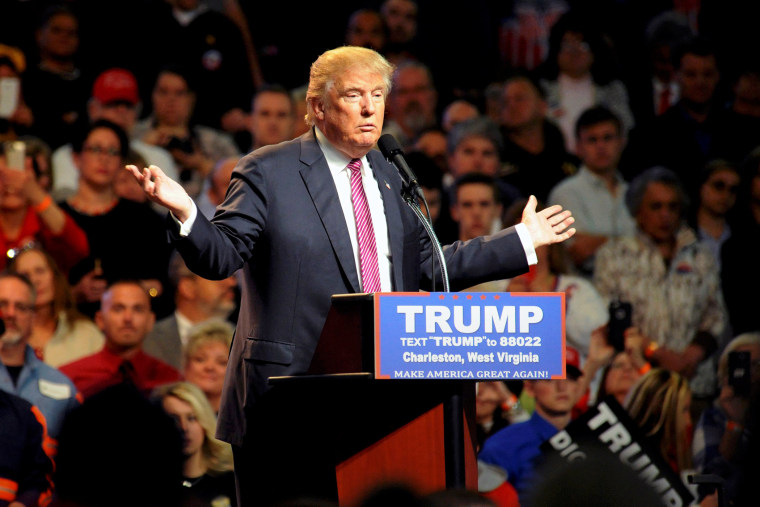Some of the political media establishment has apparently settled on a new "narrative": Donald Trump will appeal to Democrats by breaking with Republican orthodoxy and endorsing some progressive goals. It might be a compelling thesis, if it were in any way true.
The Washington Post got the ball rolling last week with a provocative, attention-getting headline: "How Donald Trump is running to the left of Hillary Clinton." As proof, the article noted, among other things, Trump's "America First" foreign policy, and his willingness to shift "to the left on the minimum wage and tax policy."
The problem, of course, is much of this is factually incorrect. Given its historical underpinnings, there's nothing liberal about Trump's "America First" vision, and the media hype surrounding Trump's purported shifts on the minimum wage and tax policy turned out to be completely wrong. The Post's entire thesis struggled under scrutiny.
And yet, there it was again in the New York Times yesterday.
On a range of issues, Mr. Trump seems to be taking a page from the Sanders playbook, expressing a willingness to increase the minimum wage, suggesting that the wealthy may pay higher taxes than under his original proposal, attacking Mrs. Clinton from the left on national security and Wall Street, and making clear that his opposition to free trade will be a centerpiece of his general election campaign. As Mr. Trump lays the groundwork for his likely showdown with Mrs. Clinton, he is staking out a series of populist positions that could help him woo working-class Democrats in November.
Again, if these observations were rooted in fact, the thesis might have merit, but it's important not to fall for shallow hype and bogus narratives. Trump did not endorse a minimum-wage hike; he actually said there shouldn't be a federal minimum wage at all. He did not call for higher taxes on the wealthy; he proposed literally the exact opposite.
And far from "attacking Mrs. Clinton from the left on ... Wall Street," a few hours after the Times article was published, Trump insisted he would repeal Dodd-Frank reforms -- which represents an attack from the right, not the left.
The Times sees Trump "staking out a series of populist positions," but there's nothing even remotely populist about massive tax breaks for the wealthy, repealing Wall Street safeguards, opposing an increase to the federal minimum wage, and even opening the door to entitlement cuts.
It's easy to get the impression that the media likes the idea -- not the reality, but the idea -- of Trump having broad national appeal, enough to woo disaffected Democrats and Bernie Sanders' most ardent backers, and defeat Clinton in a general election. But the thesis is belied by reality. Trump's platform -- on the economy, on immigration, on taxes, on policies towards women, on race, on torture -- offers literally nothing for progressive voters, which is probably why Sanders has said he's prepared to fight as hard as he can in the coming months to ensure Trump's defeat.
To be sure, favorable media coverage might advance Trump's cause on his behalf, and if the public is led to believe the Republican really is "running to the left of Hillary Clinton" and "staking out a series of populist positions," it might actually help the presumptive GOP nominee win.
But that doesn't make the coverage true.
